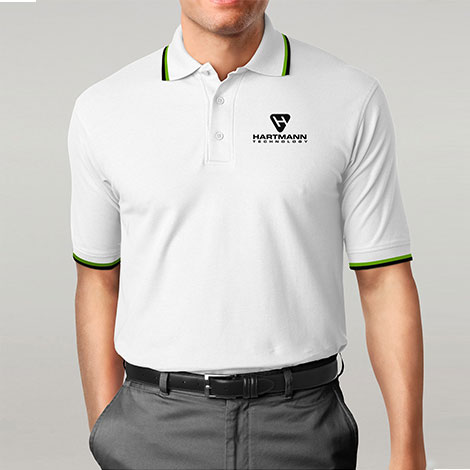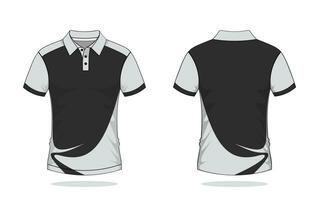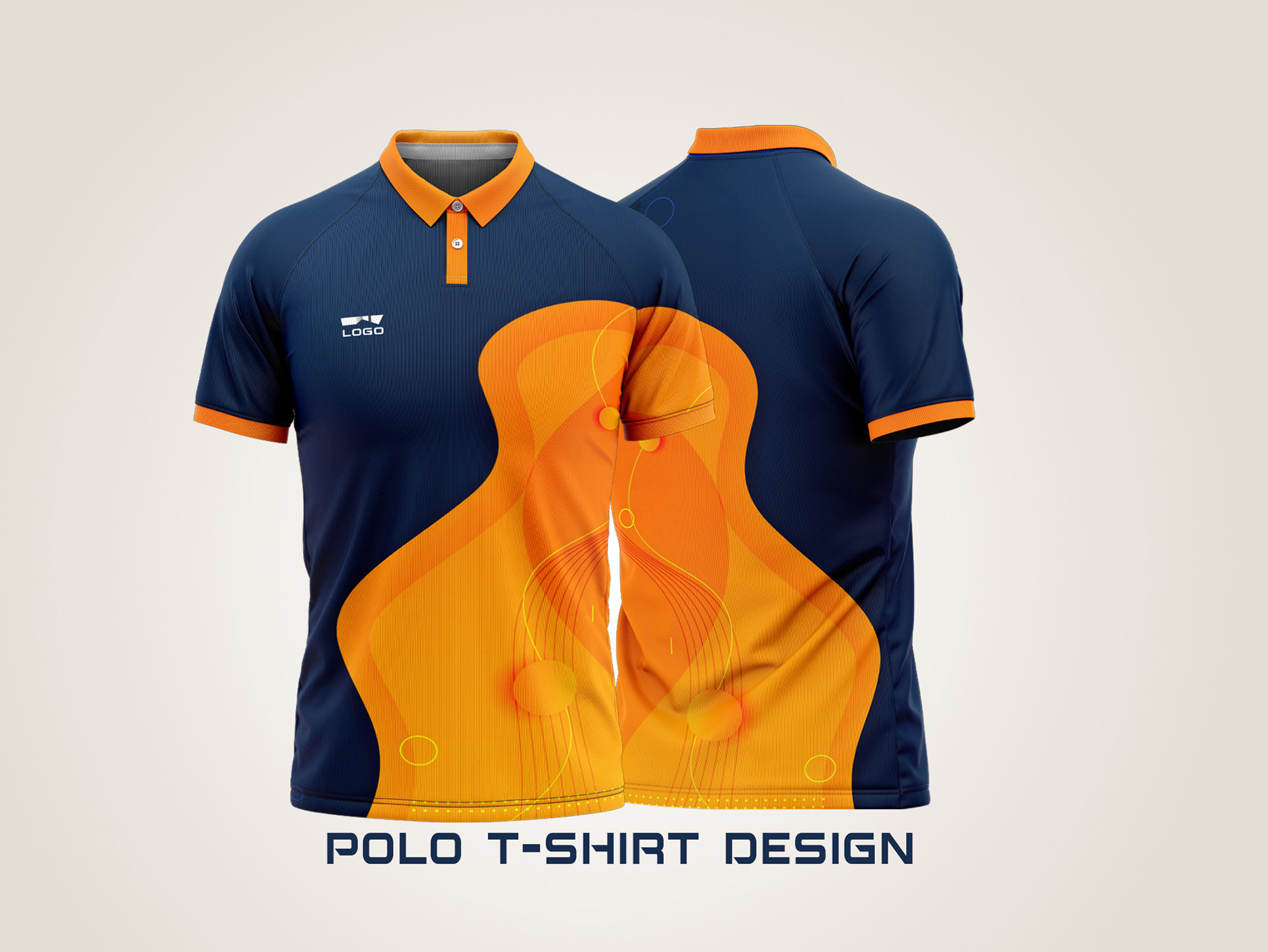In today's professional landscape, the line between formal and casual is constantly evolving. For many offices, the polo shirt and a well-designed t-shirt have become staples, offering a comfortable yet polished alternative to traditional business attire. But what goes into making these seemingly simple garments truly stand out and effectively represent a brand or individual? It's far more than just picking a color and slapping on a logo. It's about understanding the "design background" – the myriad of considerations, choices, and subtle elements that collectively shape the final product. From fabric feel to brand messaging, every detail contributes to the overall impression. Let's dive deep into 32 crucial design backgrounds that can elevate your office polo and t-shirt game, ensuring they convey professionalism, comfort, and style.
The Foundation: Fabric, Fit, and Core Elements
The journey of a great office polo or t-shirt begins with its very essence: the material it's made from and how it drapes on the body. These fundamental choices lay the groundwork for everything else.
Material Matters: Fabric Choices and Their Impact
Color Palette Psychology: Beyond aesthetics, colors evoke emotions and perceptions. Blues suggest trustworthiness, greens signify growth, and greys convey sophistication. Choosing a palette that aligns with your brand's values is paramount.
Fabric Choice (Polo - Pique): The classic textured weave of pique cotton offers breathability and a traditional, slightly more formal look, making it a timeless choice for office polos.
Fabric Choice (Polo - Jersey/Interlock): Softer and smoother than pique, jersey or interlock fabrics provide a more refined, less textured feel, often preferred for a sleeker, modern polo.
Fabric Choice (T-Shirt - Cotton): Natural, breathable, and comfortable, high-quality cotton is a go-to for office t-shirts, offering a soft hand and versatility.
Fabric Choice (T-Shirt - Poly-blend/Tri-blend): These blends offer enhanced durability, wrinkle resistance, moisture-wicking properties, and often a softer drape, ideal for active or busy office environments.
Collar Style (Polo - Ribbed): The most common and traditional, a ribbed collar provides structure and a classic polo aesthetic.
Collar Style (Polo - Flat-Knit/Self-Fabric): Offering a more contemporary and often sleeker look, a flat-knit or self-fabric collar can elevate the polo's formality and comfort.
Button Placket (Polo - 2-Button/3-Button): The number of buttons influences formality; two buttons are more casual, while three can lean slightly more formal. A well-constructed placket is key.
Button Placket (Polo - Hidden): For a truly minimalist and modern aesthetic, a hidden button placket offers a clean, uninterrupted front, exuding sophistication.
Sleeve Cuffs (Polo - Ribbed): Traditional ribbed cuffs provide a snug, structured fit around the arm, maintaining a classic polo silhouette.
Sleeve Cuffs (Polo - Open Hem): An open hem sleeve offers a more relaxed, modern feel, often seen on performance or more casual polo styles.
Fit & Silhouette (Classic/Relaxed): A timeless, comfortable fit that isn't too tight or too loose, suitable for a broad range of body types and professional settings.
Fit & Silhouette (Slim/Modern): A more tailored, contemporary fit that offers a sharper, more fashion-forward appearance without being restrictive.
Branding & Aesthetics: Making Your Mark
Once the core garment is chosen, the next step is to infuse it with your brand's identity. This involves strategic placement, choice of application, and subtle design details that speak volumes.
Designing for Identity and Visual Appeal
Logo Placement (Standard): The classic left chest position for a logo is universally recognized and effective for brand visibility.
Logo Placement (Alternative): Consider the sleeve, back yoke, or even a subtle tonal logo near the hem for a less conventional, modern approach.
Logo Size & Proportion: A logo that is too large can overwhelm the garment, while one too small might go unnoticed. Proportionality is key to a balanced design.
Embroidery vs. Print (Polo): Embroidery offers a premium, tactile feel and durability, making it a popular choice for polo shirts.
Embroidery vs. Print (T-Shirt): Printing (screen print, DTG, vinyl) allows for more complex designs, vibrant colors, and a smoother finish, often preferred for t-shirts.
Subtle Branding Elements: Tonal logos (same color as the fabric), woven labels, or branded buttons can add a touch of understated sophistication.
Pattern & Texture (Subtle): Incorporating subtle patterns like heathered fabrics, micro-stripes, or textured weaves can add visual interest without being distracting.
Stitching Details: Contrast stitching, reinforced seams, or specific stitch patterns can add a premium feel and visual appeal to the garment.
Brand Messaging Integration: Beyond the logo, consider subtly integrating a company slogan or core value into the design, perhaps on an interior tag or placket.
Performance & Practicality: Beyond the Surface
A great office polo or t-shirt isn't just about how it looks; it's also about how it performs throughout the day. These practical considerations ensure comfort, durability, and ease of maintenance.
Functionality, Comfort, and Longevity
Ventilation Features: Side vents on polos or mesh panels in key areas can enhance breathability and comfort, especially in warmer climates or active roles.
Moisture-Wicking Properties: Fabrics designed to draw sweat away from the body are essential for maintaining comfort and freshness during long workdays.
Wrinkle Resistance: For busy professionals, a garment that resists wrinkles reduces the need for constant ironing, saving time and ensuring a crisp look.
UV Protection: If employees spend time outdoors for corporate events or travel, built-in UV protection in the fabric offers an added layer of safety.
Antimicrobial Treatment: Fabrics treated to inhibit bacterial growth help prevent odors, keeping the wearer feeling fresh throughout the day.
Sustainability Focus: Choosing organic cotton, recycled polyester, or other eco-friendly materials demonstrates a commitment to environmental responsibility.
Ethical Sourcing & Production: Ensuring that garments are produced under fair labor practices and responsible manufacturing conditions aligns with corporate social responsibility.
Target Audience Demographics: Understanding the age, gender, and roles of the wearers helps tailor the design to their specific needs and preferences.
Company Culture Reflection: The design should resonate with the company's culture – whether it's formal, creative, tech-savvy, or community-oriented.
Seasonality & Climate Adaptability: Considering the local climate and seasonal changes helps in selecting appropriate fabric weights and features for year-round comfort.
Event Specificity: Designing distinct polos or t-shirts for daily office wear versus special corporate events, trade shows, or team-building activities can be beneficial.
Layering Potential: Ensure the fit and fabric work well when layered under blazers, cardigans, or jackets, offering versatility for different office settings.
Uniformity vs. Individuality: Striking a balance between consistent brand representation and allowing for some personal expression (e.g., choice of color within a palette) is important.
Accessibility & Inclusivity: Offering a wide range of sizes, gender-neutral options, and considering adaptive features ensures the garments are suitable for everyone.
Cost-Effectiveness & Budget: Balancing the desired quality and features with the allocated budget is a practical design consideration for any organization.
Durability & Longevity: Investing in high-quality materials and construction ensures the garments withstand frequent washing and wear, offering a better return on investment.
Ease of Care: Garments that are machine washable, require minimal ironing, and retain their shape and color after washing are highly valued by busy employees.
Future Trends & Adaptability: While timelessness is key, being aware of evolving fashion trends allows for designs that feel current without being overly faddish, ensuring long-term relevance.
Conclusion
Designing the ideal office polo or t-shirt is an intricate process, far removed from a simple pick-and-choose decision. It involves a thoughtful consideration of these 32 "design backgrounds" – from the very fibers of the fabric to the subtle nuances of branding and the practicalities of daily wear. By meticulously addressing each of these elements, you can create garments that not only look great but also perform exceptionally, truly represent your brand, and empower your team with comfort and confidence. Investing time in these design considerations will undoubtedly lead to a more impactful and enduring professional wardrobe.
This article explored 32 critical design backgrounds for office polo shirts and t-shirts, covering everything from fabric choices, fit, and collar styles to logo placement, branding techniques, and practical considerations like moisture-wicking, wrinkle resistance, and sustainability. It highlighted the importance of balancing aesthetics with functionality, comfort, and brand identity to create professional and effective workwear.




